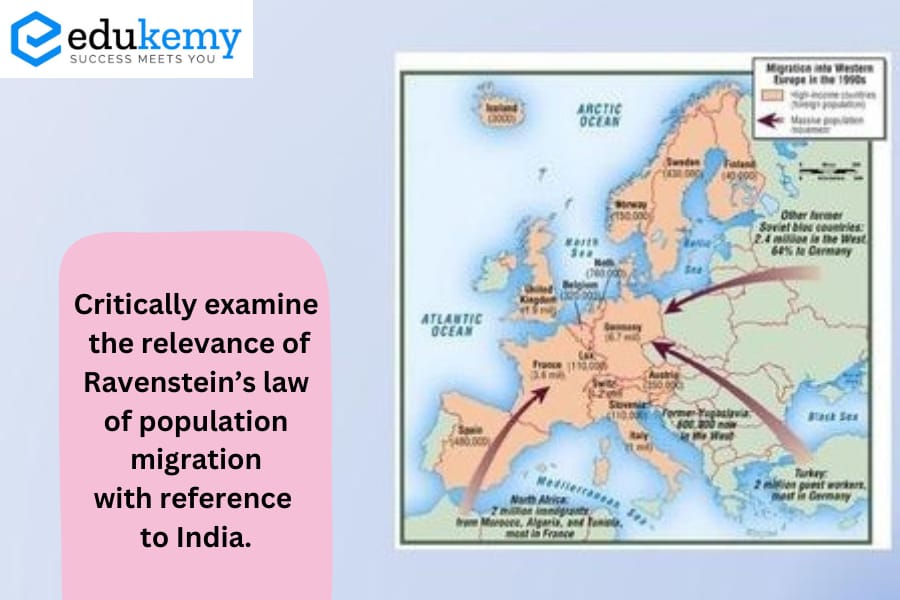
Ravenstein’s Laws of Migration, formulated by Ernst Georg Ravenstein in the late 19th century, attempt to explain patterns of human population migration. The laws highlight factors influencing migration, including distance, intervening obstacles, gender, age, and economic factors.

Distance and Direction:
Ravenstein’s law suggests that most migrants move short distances, with long-distance migrations becoming less common.
- In India, this is evident in rural-to-urban migration, where individuals often move from nearby rural areas to urban centers in search of better opportunities.
- For example, the migration from villages in Uttar Pradesh to cities like Delhi or Mumbai.
Gender and Age:
Ravenstein’s laws acknowledge that different demographic groups migrate for different reasons.
- In India, there’s a noticeable trend of male-dominated migration for work purposes, particularly in sectors like construction, agriculture, and informal labor.
- However, there’s also an increasing number of women migrating for work, especially in sectors like domestic work, textiles, and hospitality.
Economic Factors:
Economic opportunities are a significant driver of migration, as per Ravenstein’s laws.
- In India, the movement of people from rural to urban areas is largely motivated by the search for employment and higher wages.
- For instance, states like Bihar and Uttar Pradesh witness significant outmigration due to limited economic opportunities, while states like Maharashtra and Gujarat attract migrants due to their industrial and service sectors.
Intervening Obstacles:
Ravenstein’s laws highlight the role of intervening obstacles, such as physical barriers or administrative regulations, in influencing migration patterns.
- In India, factors like poor infrastructure, caste-based discrimination, and bureaucratic hurdles can act as barriers to migration, particularly for marginalized communities.
Counterurbanization:
Ravenstein’s laws suggest that some migrants may move from urban to rural areas, a phenomenon known as counterurbanization.
- In India, this is observable in the form of reverse migration, as seen during the COVID-19 pandemic when many urban migrants returned to their rural homes due to job losses and concerns about health and safety.
Seasonal Migration:
Ravenstein’s laws also account for seasonal migration, particularly in agricultural societies.
- In India, seasonal migration is common in states like Punjab and Haryana, where agricultural workers move temporarily to other regions for harvesting or sowing seasons.
Technology and Globalization:
While Ravenstein formulated his laws in a pre-globalization era, the principles remain relevant in the context of contemporary India. However, advancements in technology and transportation have facilitated long-distance migration, leading to increased mobility and interconnectedness.
Conclusion:
Ravenstein’s laws of migration provide a useful framework for understanding population movement in India. Looking ahead, policymakers in India should consider these factors when formulating strategies to manage and harness the potential benefits of migration while addressing its challenges. This could involve investments in infrastructure, education, and employment opportunities, as well as efforts to mitigate the social and environmental impacts of migration.
In case you still have your doubts, contact us on 9811333901.
For UPSC Prelims Resources, Click here
For Daily Updates and Study Material:
Join our Telegram Channel – Edukemy for IAS
- 1. Learn through Videos – here
- 2. Be Exam Ready by Practicing Daily MCQs – here
- 3. Daily Newsletter – Get all your Current Affairs Covered – here
- 4. Mains Answer Writing Practice – here

